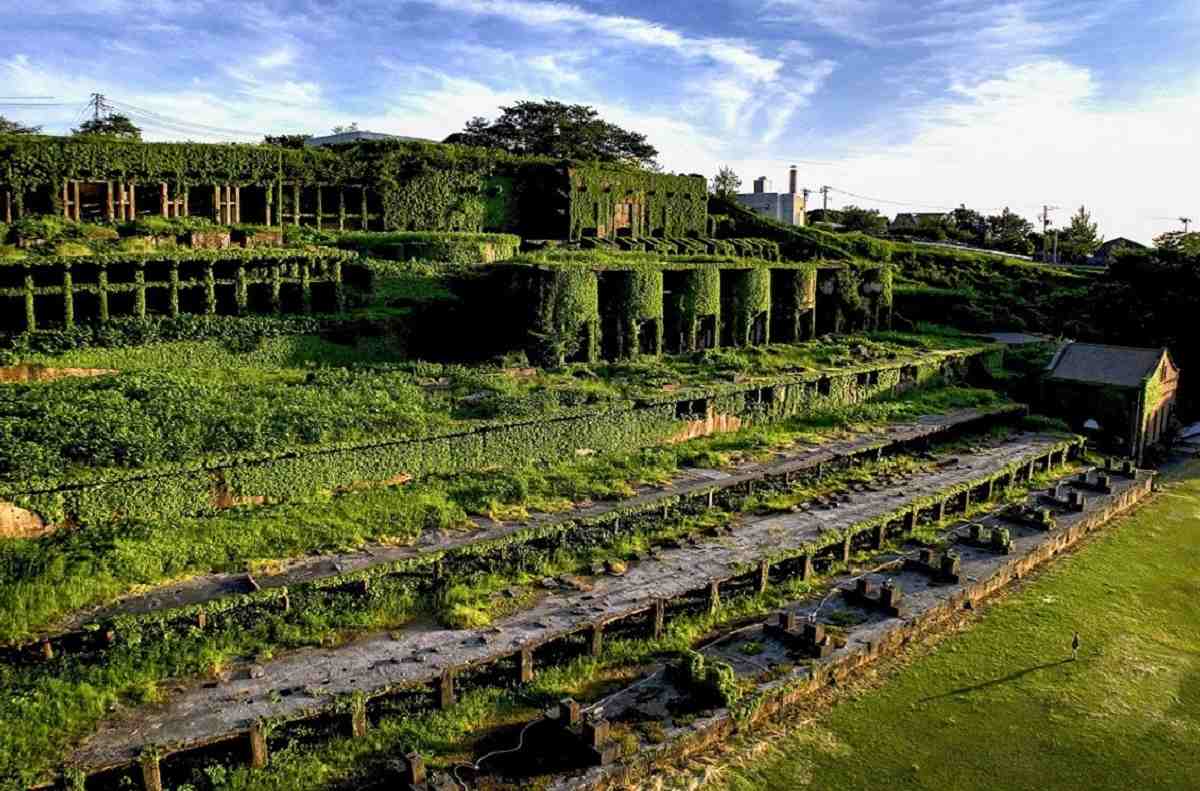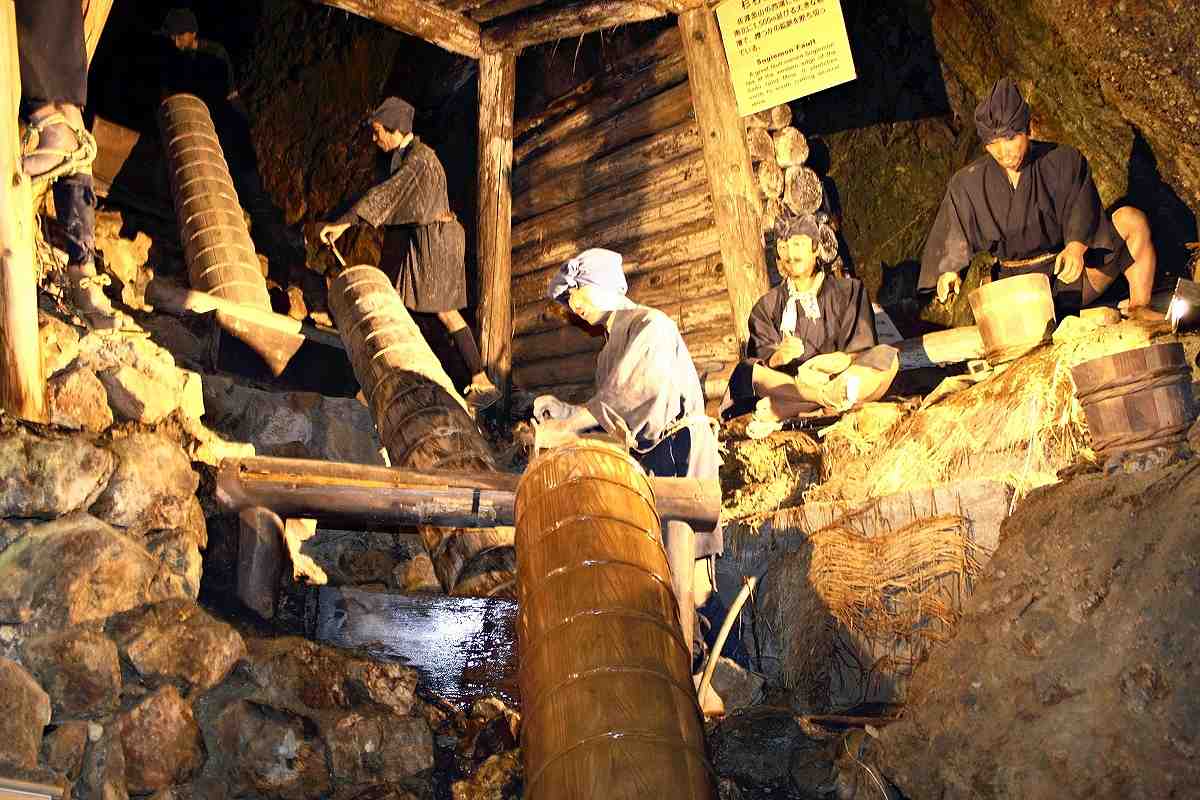
The site of the Kitazawa Flotation Plant, which supported gold production in the early Showa era (1926-1989), is seen in Sado, Niigata Prefecture. Areas around the plant were excluded from the World Heritage List based on a recommendation by the International Council on Monuments and Sites.
13:00 JST, August 25, 2024
The UNESCO World Heritage Committee has decided to add the Sado Island Gold Mines in Sado, Niigata Prefecture, to the list of World Heritage Sites. The decision to include the complex came after an agreement between Japan and South Korea to install a permanent exhibition on site at the mine describing the lives of workers from the Korean Peninsula and the harsh working conditions they faced.
South Korea initially opposed the mines’ registration, claiming the complex was a site where people from the Korean peninsula were forced to work during World War II.
The unusual development that led to the registration reflects the reality of World Heritage sites, which are strongly influenced by international politics.
“Whole history”

A diorama of the Sodayu Tunnel in the Aikawa Gold and Silver Mine in Sado, Niigata Prefecture.
On July 28, an exhibition opened at the Aikawa History Museum in Sado. Using historical documents, the harsh conditions of the miners are described.
Among the displays in the exhibit is one that explains: “Documents show there were times when miners worked an average of 28 days a month” and “Documents show there was a labor dispute over demands for better treatment.”
The exhibition was installed as part of an agreement between Tokyo and Seoul.
In June, the International Council on Monuments and Sites (ICOMOS), an advisory body to UNESCO, asked Japan to remove from the proposal all areas that had been extensively developed during the Meiji period (1868-1912) and after.
Yasuyoshi Okada, professor emeritus at Kokushikan University and chairman of the Japanese ICOMOS National Committee, said: “ICOMOS apparently had Japan-South Korea relations in mind [when it made that request]. Registration of World Heritage sites is often influenced not only by cultural merits, but also by the political environment of the countries involved.”
In accepting the Sado Mines’ registration, the South Korean delegation at a meeting of the World Heritage Committee on July 27 referred to sites associated with the Meiji-era Industrial Revolution that were added to the World Heritage List in 2015, when it argued that both the light and dark sides of the site should be remembered. At the time, South Korea and Japan were engaged in heated discussions about “forced labor.”
UNESCO issued a resolution during the meeting calling for an explanation of the “full history” of the Sado Mines, to be included on the site.
Akira Ide, a professor of tourism at Kanazawa University, says industrial heritage often has a negative history, marked by labor exploitation, health risks, environmental destruction and other problems.
“Showing the ‘whole history’ has become the norm in recent years when a site is designated as a World Heritage Site. It is not only necessary to show the glorious past of the Sado Mines, but also to confront the negative aspects,” said Ide, who is an expert on World Heritage sites.
In recent years, several countries have been involved in a series of conflicts over World Heritage sites.
In 2017, Israel withdrew from UNESCO in protest after the international organization declared the Old City of Hebron/Al-Khalil in the Palestinian autonomous region a World Heritage Site.
In 2021, the World Heritage Committee decided to postpone indefinitely the deliberation on the registration of the Gdansk Shipyard, the birthplace of the Polish trade union movement Solidarity, as a World Heritage site due to conflicts between Eastern European countries and Russia. Solidarity eventually played a major role in the fall of the Iron Curtain and Poland nominated the shipyard for registration.
Meanwhile, countries have recently been nominating all kinds of sites, including recent ones, because most places with easily recognizable value have already been designated. Moreover, countries will probably continue to register World Heritage sites, because the sites attract tourists.
However, many relatively recent historical sites are in some way connected to wars, territorial disputes or religious issues, and as a result they are often a source of conflict.
New approach
Last year, UNESCO began recognizing “Sites of Remembrance” related to recent conflicts. Three sites were registered, including the “Burial and Memorial Sites of the First World War (Western Front)” in Belgium and France, which were jointly proposed by the two countries.
During this year’s committee meeting, UNESCO added “Human Rights, Liberation and Reconciliation: Nelson Mandela Legacy Sites” to its list of “Sites of Memory.” The group of sites includes places honoring the former South African president who led the country’s efforts to abolish apartheid.
The list of ‘Places of Memory’ was drawn up following a development in 2018, when UNESCO postponed adding ‘Places of Burial and Remembrance of the First World War (Western Front)’ to the heritage list, following discussions about the appropriateness of registering places associated with wars and conflicts.
UNESCO then held discussions to determine how to treat sites related to recent conflicts, human rights violations, liberation movements under colonization, and other issues. UNESCO established the relevant procedures and established “places of peaceful reflection” as criteria for the registration of controversial sites.
Chihei Suzuki, a senior cultural heritage specialist at the Agency for Cultural Affairs who took part in the talks, praised the new approach.
“It is remarkable that not only the sites of wars and massacres were recognized, but also the value of the cemeteries and monuments associated with them,” Suzuki said.
According to former UNESCO Director-General Koichiro Matsuura, more sites linked to politically complex backgrounds may be nominated.
“Human history has positive aspects, but it also has negative aspects, such as war and slavery. Ensuring that World Heritage sites are not forgotten is an important contribution to peace,” Matsuura said.


